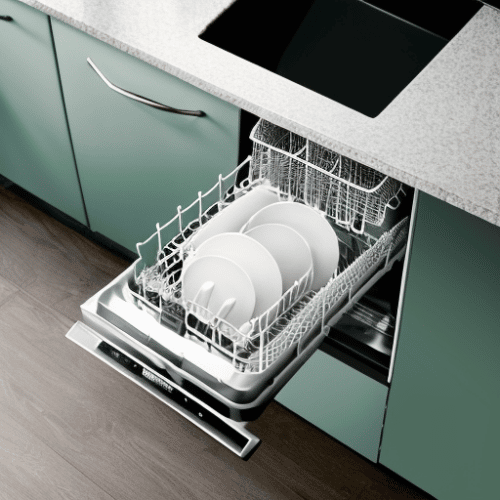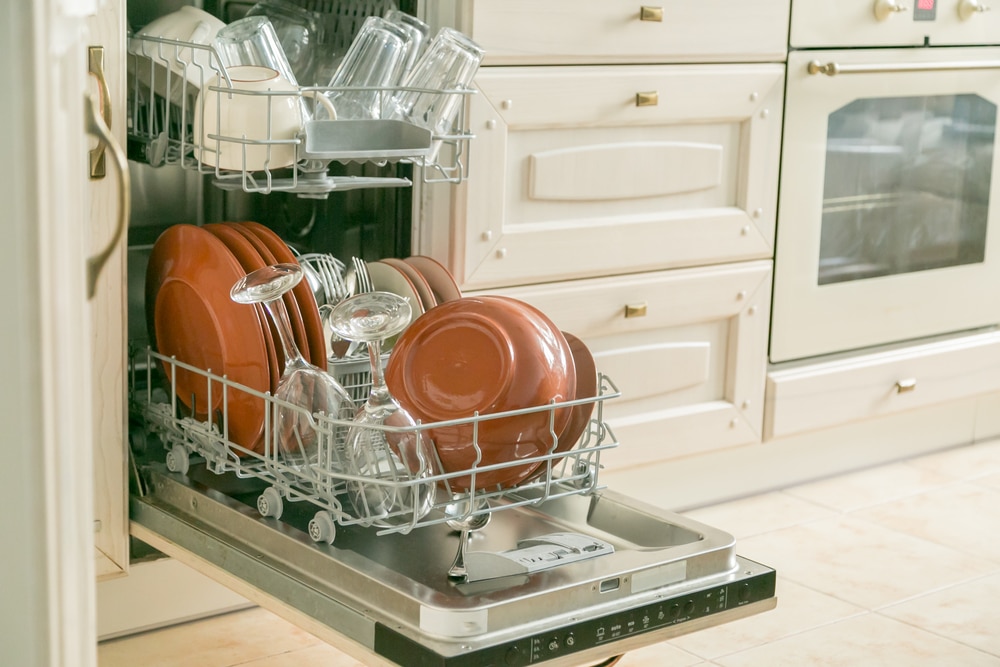Last Updated on
Learning how to measure for an integrated dishwasher can be a daunting task, especially when it comes to measuring for one. How do you make sure that the appliance will fit in your kitchen and work properly? You need to measure for an integrated dishwasher before you buy or install one. In this blog post, we’ll go over all the necessary steps involved in taking accurate measurements so that you don’t end up with a faulty product. We’ll also provide helpful tips on checking door clearance, electrical requirements and water supply needs so that you know exactly what’s needed before purchasing your new machine. So grab your tape measure and let’s get started – but remember: Measure twice; Install once.
Table of Contents:
- Measuring the Space
- Checking Door Clearance
- Checking Electrical Requirements
- Checking Water Supply Requirements
- Conclusion
Measuring the Space
Measuring the space for an integrated dishwasher is a crucial step in ensuring that it fits perfectly into your kitchen. It’s important to make sure you have enough room and clearance before purchasing one, so here are some tips on how to measure the space correctly.
Width:
The width of an integrated dishwasher will vary depending on the model, but typically ranges from 45 cm to 60 cm wide. To ensure that you get a dishwasher with the right width for your kitchen, use a measuring tape or ruler to measure the available space between the cabinets or walls where you plan to install it. Make sure there is at least 1-2 inches of extra space on either side for proper ventilation and air circulation around the appliance.
Depth:
The depth of an integrated dishwasher also varies by model, ranging from 55 cm up to 70 cm deep. Measure this dimension carefully as well since having too little depth can cause problems when opening and closing doors or drawers nearby. Additionally, be aware that some models may require additional clearance behind them due to water connections located at the back of certain units – check with your retailer if necessary.
Height:
Lastly, consider height when selecting an integrated dishwasher – most models range from 85cm up to 95cm tall (including any adjustable feet). Be sure that there is sufficient headroom above where you plan on installing it; otherwise, opening and closing doors could become difficult over time due to limited vertical clearance in tight spaces like kitchens.
Once you have measured the space for your dishwasher, it’s time to check that there is enough door clearance for a successful installation – let’s take a look at how to do this.
Checking Door Clearance

When it comes to home and garden projects, checking door clearance is an important step that should not be overlooked. It’s easy to get caught up in the excitement of a new project and forget about this crucial detail.
Before you start any project involving doors, measure the space between the door frame and wall or other obstructions like furniture. This will tell you how much room there is for your door to open and close properly without hitting anything else in its path. If there isn’t enough clearance, then you’ll need to adjust accordingly before proceeding with your project.
Next, check if the hinges are installed correctly so that they don’t interfere with the opening or closing of the door when it swings outwards or inwards. Make sure that all screws are tightened securely into place as well; loose screws can cause issues down the line if left unchecked.
It is also essential to make sure that there is adequate headroom above the doorway, so people can pass through comfortably without having to bend their heads too low or too high. This could be especially problematic if someone has mobility issues, such as a wheelchair user who needs extra space for navigating tight spaces.
Finally, make sure there’s no carpeting underfoot which might impede on movement when entering/exiting a room – this can be easily avoided by laying down some non-slip mats instead.
Once you’ve checked the door clearance, it’s time to move on to making sure your electrical requirements are met – a crucial step in getting the dishwasher of your dreams.
Checking Electrical Requirements
When it comes to electrical requirements for home and garden products, it’s important to know what type of outlet is needed and how many amps are required. This information can usually be found on the product packaging or in the manual that came with your purchase.
Types of Outlets:
Most common types of outlets used for home and garden products include standard three-pronged outlets, GFCI (ground fault circuit interrupter) outlets, and specialized plugs such as those used for outdoor power tools. It’s important to make sure you have the right type of outlet installed before plugging in any device.
Amps Required:
The number of amps required will vary depending on the product you’re using. Generally speaking, most small appliances require 10-15 amps while larger items like air conditioners may need up to 30 amps or more. If you’re unsure about how much power a particular appliance needs, check its user manual or contact customer service for help determining the correct amperage requirement.
Safety First:
Finally, never attempt to use an extension cord with any kind of appliance unless specifically instructed by the manufacturer. This could lead to dangerous situations such as fires or electrocution. Always double-check all wiring connections before plugging anything in and turn off all power sources at both ends before attempting repairs yourself – even if they seem simple enough.
Now that you’ve checked your electrical requirements, it’s time to make sure your water supply is up to the task of powering an integrated dishwasher. Let’s take a look at what you need for a successful installation.
Checking Water Supply Requirements
When it comes to checking water supply requirements for home and garden products, there are a few things you should keep in mind. Firstly, you need to determine what type of connection is needed. Depending on the product, this could be anything from a standard hosepipe connector to an advanced mains-fed system with additional components such as pumps or filters.
You also need to check the water pressure required by the product. This will vary depending on its purpose; some products may require higher pressures than others due to their specific functions or features. For example, if you’re installing a shower head that has multiple spray settings then it will likely require more pressure than one with just one setting. If your existing plumbing doesn’t provide enough pressure then you may have to install additional components such as pumps or valves in order to increase it sufficiently.
Conclusion
Finding out how to measure for an integrated dishwasher is a crucial step in the installation process. Taking accurate measurements of your space, checking door clearance, and making sure that you have the necessary electrical and water supply requirements are all important factors to consider before installing your new appliance. With careful planning and attention to detail, you can ensure that your integrated dishwasher will fit perfectly into your kitchen space.
Paul is the type of person who never met a problem he couldn’t fix. He can always be found tinkering with something in his house, even if it isn’t broken! His tips and tricks are often shared on our site. He’s the one you call when something breaks because he has been known to improvise fixes for everything from leaky faucets to malfunctioning dryers.



